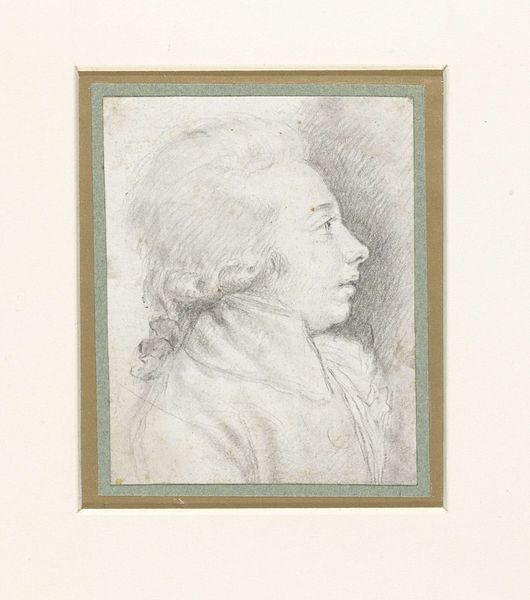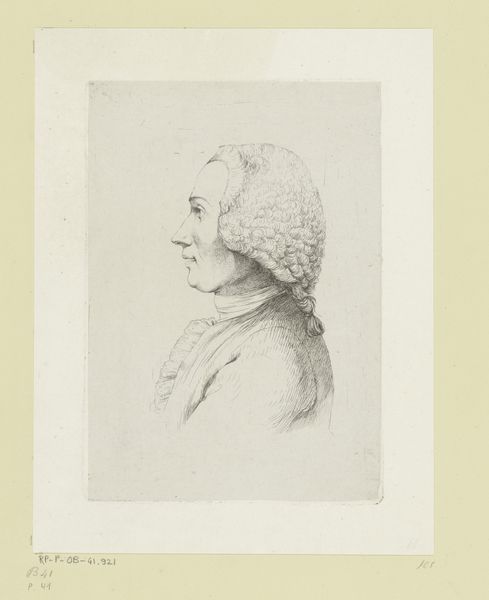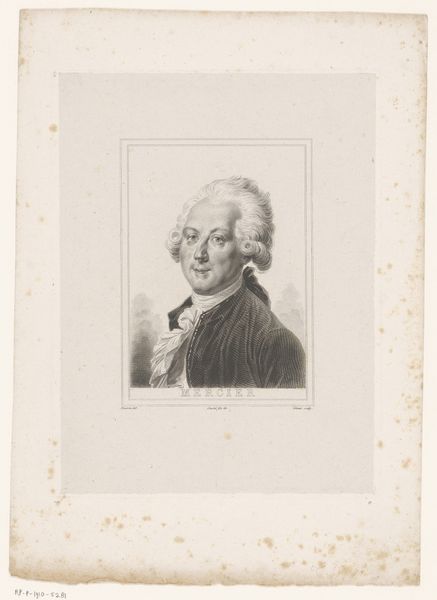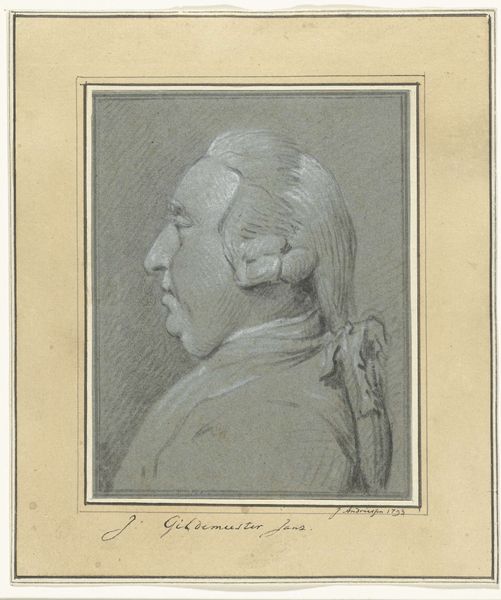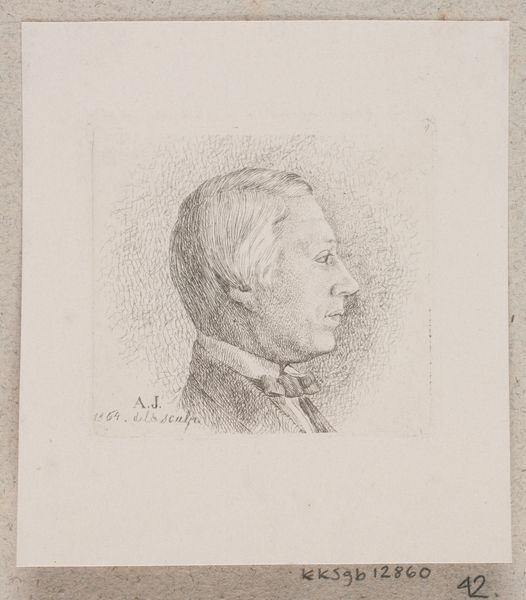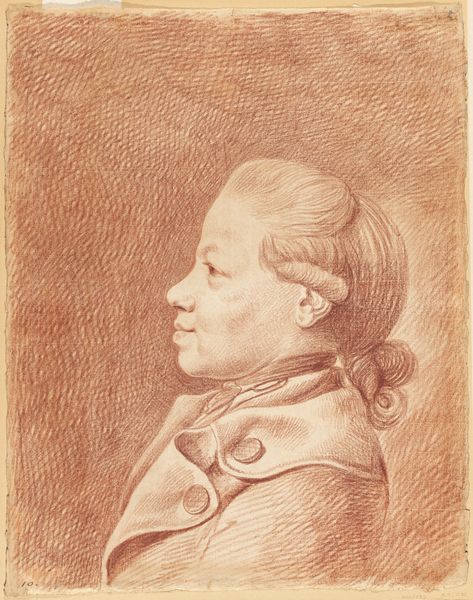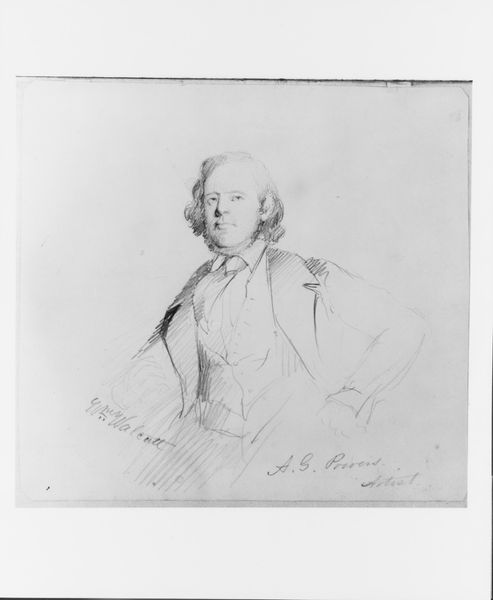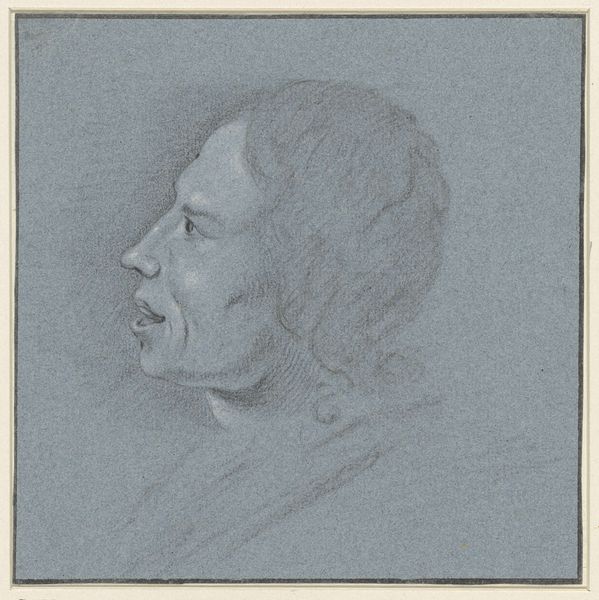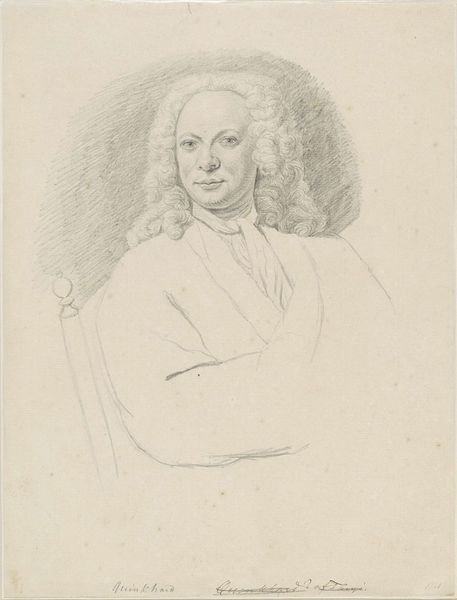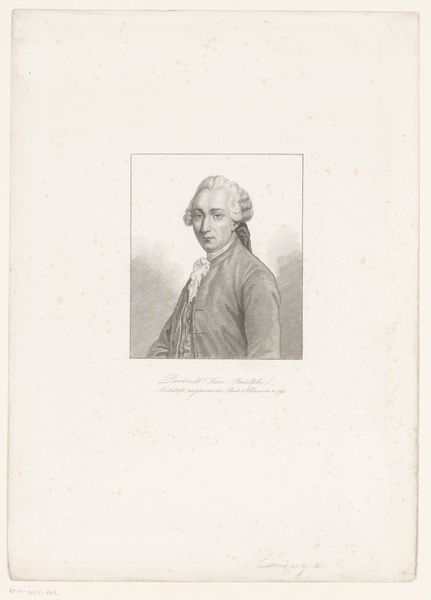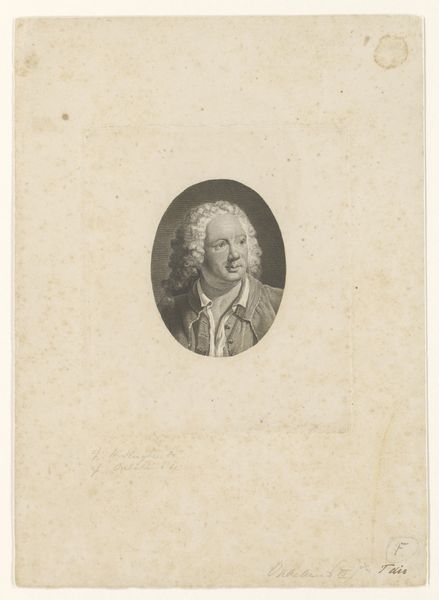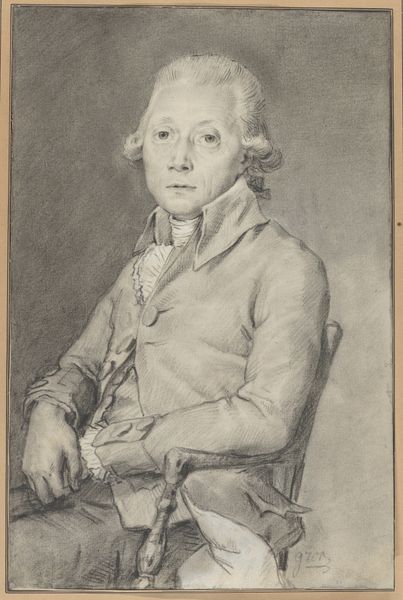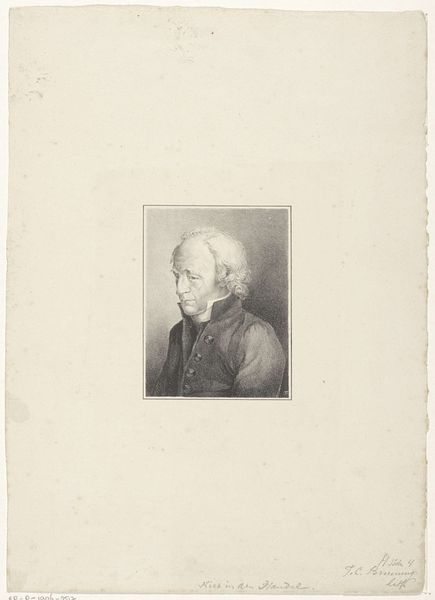
drawing, pencil
#
portrait
#
pencil drawn
#
drawing
#
neoclacissism
#
pencil sketch
#
charcoal drawing
#
pencil drawing
#
pencil
#
portrait drawing
#
academic-art
Dimensions: height 94 mm, width 75 mm
Copyright: Rijks Museum: Open Domain
Curator: Let’s consider this captivating profile portrait, titled "Profielportret van een oudere man met pruik", housed right here at the Rijksmuseum. While its precise creation date is open to some debate, it’s believed to originate somewhere between 1750 and 1840, conceived by the skilled hand of Augustin de Saint-Aubin. Editor: Ah, yes, this older gentleman! I’m immediately struck by a certain fragility, or perhaps vulnerability in this image. The delicate pencil strokes...it’s as if he's almost fading away. There's a whisper of melancholy, wouldn't you agree? Curator: I appreciate that perspective. From my understanding, this work embodies certain aspects of Neoclassical art, where there was indeed this focus on idealism, though tempered here by, as you note, the medium's subtlety. And of course, it places the figure squarely within the aesthetic conventions of the period – the powdered wig is a distinct marker of social status, for example. Editor: Of course, the wig screams of that era. Yet, despite its function as social signaling, I am curious about what kind of expression the artist has successfully given the portrait. The subject has a straight posture, and slightly frowning brow, like he disapproves of something or maybe somebody. Curator: Exactly! While it is "just a drawing", these sketches offered insight into a personage beyond courtly artifice. The materiality contributes enormously to this aim as well, as Saint-Aubin captures a psychological presence amidst his social position. Editor: The slight unevenness, that hazy line quality—it almost imbues the piece with a modern feel, or invites contemplation about what "real" is when looking at one's image, wouldn't you agree? A candid observation about aging that moves beyond pure flattery. It offers this…human connection. Curator: Ultimately, this unassuming portrait drawing opens dialogues about the period itself, about how individuals negotiate social roles, and about portraiture and the human presence it has come to represent. Editor: Agreed. Saint-Aubin may have just aimed for an efficient depiction, but he gave this man on paper something genuine and everlasting!
Comments
No comments
Be the first to comment and join the conversation on the ultimate creative platform.
